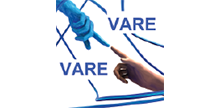The impact of virtual visualisation: perception and design of spaces in ethnographic projects
- abTecnologico de Monterrey, Mexico
Cite as
Márquez Cañizares J. C., Rojas J.-C. (2019). The impact of virtual visualisation: perception and design of spaces in ethnographic projects. Proceedings of the 5th International Conference on Virtual and Augmented Reality in Education (VARE 2019), pp. 36-41. DOI: https://doi.org/10.46354/i3m.2019.vare.006
Abstract
The use of VR technology within education is an area that has generated great interest in recent years, so this work follows that trend and contains nuances related to user-centred design education. The objective of this work is to identify students’ perceptions of the use of VR technology for ethnographic research. A group of 20 industrial design students from Tecnologico de Monterrey conducted a field investigation, which included interviews and surveys, using HMD with videos and stereoscopic images of a public park in Monterrey, Mexico. Based on the research and information analysis, areas of opportunity were identified and urban furniture proposals for the public park that place were generated. Once the design process was completed, an evaluation instrument was applied to measure, through statistical analysis, the students' perceptions of their experience using technology in the design process; gender, qualification obtained and the relevance of the technology used was also considered.
References
- Ackerman J., 2002. Origins, imitation, conventions:representation in the visual arts. Cambridge, MA:MIT Press.
- Ayllon T., 2013. Elementos de meteorología y climatología. 3rd ed. Mexico: Trillas.
- Baeten M., Kyndt E., Struyven K., and Dochy F., 2010. Using student-centred learning environments to stimulate deep approaches to learning: Factors encouraging or discouraging their effectiveness.Educational Research Review, 5, 243-260.
- Chang T. and Huang W., 2014. Computational architecture: Connecting the physical and virtual
worlds. Frontiers of Architectural Research, 3 (4),333-336. DOI: 10.1016/j.foar.2014.10.002. - Ervin S. and Buhmann E., 2003. Trends in landscape modelling: Proceedings at Anhalt University of Applied Sciences. Heidelberg, Germany: Wichmann.
- Fonseca D., Martí N., Redondo E., Navarro I., and Sánchez A., 2014. Relationship between student profile, tool use, participation, and academic performance with the use of Augmented Reality technology for visualized architecture models. Computers in Human Behavior, 31, 434-445. DOI:10.1016/j.chb.2013.03.006.
- Fu Q., and Hwang G., 2018. Trends in mobile technology-supported collaborative learning: A
systematic review of journal publications from 2007 to 2016. Computers and Education, 119, 129-143. - Hernandez R., Fernandez C., and Baptista P., 2010. Metodología de la investigación. 5th ed. Perú:McGraw Hill.
- Higuera-Trujillo J. and Rojas J.C., 2019. Multisensory stress reduction: A neuro-architecture study of paediatric waiting rooms. Building Research &Information. In Press. DOI:10.1080/09613218.2019.1612228.
- Higuera-Trujillo J., Rojas J., Pérez M., and Abad S., 2017. The emerging render alternatives: A case study comparing the utility and aesthetics of the printed and the 360 in head-mounted display formats for architects and non-architects. Proceedings of the ASME 2017 International Mechanical Engineering Congress and Exposition,pp. V011T15A003. November 3-9, Tampa (Florida, USA). DOI:10.1115/IMECE2017-70967
- Jordan P.W., 1998. An introduction to usability.London: Taylor & Francis.
- Leila Ch. and Naima Ch., 2016. Understanding architectural design: Expressive and figurative
paradigms. Procedia - Social and Behavioral Sciences, 216, 744–53. DOI:10.1016/j.sbspro. 2015.12.072. - Llinares C. and Iñarra S., 2014. Human factors in computer simulations of urban environment:Differences between architects’ and nonarchitects’ assessments. Displays, 35 (3), 126-140. DOI: 10.1016/j.displa.2014.05.002.
- Norman D., 2011. La psicología de los objetos cotidianos. 5th ed. San Sebastián: Nerea.
- Núñez M., Rojas J.C., and Rodriguez-Paz M., 2019. Real-time distance courses to improve satisfaction and competence - A case study on the performance of students observing their grades. Proceeding of IEEE Global Engineering Education Conference (EDUCON2019), pp. 519-525. 8-11 April, Dubai (Dubai, United Arab Emirates). DOI:10.1109/EDUCON.2019.8725235.
- Rojas J.C., Higuera-Trujillo J., Mora-Salinas R., Galindo J., and Iñarra Abad S., 2018. Printed and 360 head-mounted display rendering: A crosscultural study comparing utility, spatial representation and emotional capabilities. Proceedings of the ASME 2018 International Mechanical Engineering Congress and Exposition (IMECE2018), pp. V013T05A065. 9-15 November, Pittsburgh (Pennsylvania, USA). DOI:10.1115/IMECE2018-8716.
